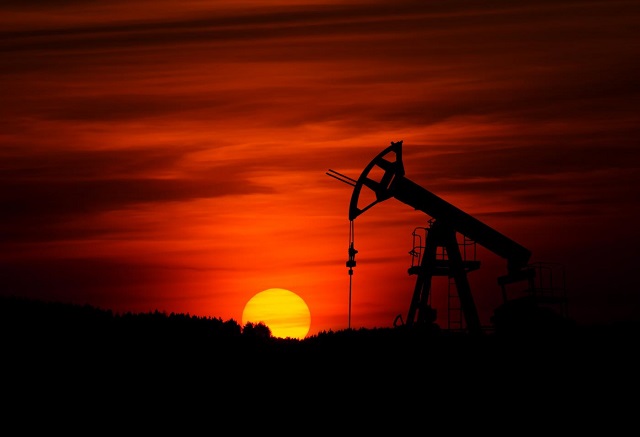Energy
Reports of the Impending Death of Petroleum Have Been Greatly Exaggerated

From EnergyNow.ca
By Jim Warren
There is a good chance climate activists smugly celebrating the collapse of conventional energy production within a generation are wildly mistaken. It is just as plausible that the time between today and ‘sunset’ for petroleum will run several decades beyond ‘net zero day’ in 2050. Actually, both predictions are suspect. History has shown people are rarely able to foresee conditions three or more decades into the future with any great precision.
Yet it seems sections of the investment community and the legacy news media assume our geopolitical future will be governed by the race to achieve net zero. They see the green transition as inevitable as death and taxes and presume oil will be sidelined accordingly.
A CBC news item that aired on March 16 boldly led with the prediction that the recently completed Trans Mountain pipeline is “likely the last new oil export pipeline the country will ever need.” The reporter was clearly caught up in a chicken and egg conundrum. He mused that due to declining production over the next decade we wouldn’t need any new pipelines. Here’s a thought, if increases in production do indeed taper off it will likely be because we can’t get enough pipelines built. Of course some CBC reporters and their fellow travellers in the climate alarmist camp never let logic get in the way of writing jubilant obituaries for the fossil fuel industries. One of the problems for conventional energy producers is that lots of people, including potential investors, have been drinking the same Kool-Aid as the media.
If the climate alarmists really have won the day, the window of opportunity is closing or has already closed on significant oil sands plant expansions, new pipelines to tidewater and any future boom in conventional oil production. After all, who wants to invest in infrastructure projects that will take a decade or more to be approved, could later be cancelled, or taxed into insolvency well before the end of their productive life spans?
No matter how long the window for viable investments remains open, one thing is clear—the Justin Trudeau government has already shortened it by a decade or more. During the eight year oil price depression that began in late 2014, new pipelines to tidewater were the one glimmer of hope for an improvement in the prices received by Canadian exporters. With more than 90,000 jobs lost in oil and gas production, manufacturing and construction by 2017, there were a lot of unemployed people in the producing provinces looking for a break. Northern Gateway, Energy East and Trans Mountain would of course allow Canadian producers to avoid the steep discounts they were subject to in the US for a significant proportion of their exports. The Trudeau Liberals cancelled any hope for that modestly brighter future.
Trans Mountain was the exception. It was the consolation prize to make up for the cancellations of Northern Gateway, Energy East and the Keystone XL. And yes, amazingly, the federal government finally got it built. It was touch and go. We were always just one bird nest away from another lengthy delay.
But wait, take heart. There is mounting evidence to suggest the hand wringing climate activists and cautious investors could have it all wrong. The goals of the green transition will probably take many more decades to achieve than they imagine.
In fact, recent events suggest the whole green transition project could actually be coming off the rails. Europe’s Green politicians are being clobbered at the polls while climate change skeptics from populist and conservative parties continue to attract voters and win elections. Green transition initiatives have been postponed and cancelled in several EU countries and the UK. The principal cause of the retreat is popular resistance to green transition initiatives that contribute to what is already an unacceptably high cost of living.
For instance, the Yellow Vests protests in France forced President Emmanuel Macron to forego a number of unpopular fuel tax measures including a carbon tax. But that wasn’t until after 11 people died and over 4,000 were injured as a result of the protests. The protests began in November 2018 and have continued sporadically to the present.
Protests by farmers in the Netherlands in 2019 beat back GHG reduction measures which would have restricted nitrogen fertilizer use and cut the national cow herd by one-half. Farmers refused to accept the assault on their incomes and plugged the country’s highways with their tractors. One of their demonstrations was reported to have caused 1000 km of traffic jams. In another protest they shut down Eindhoven airport for a day. Members of one of the more militant groups participating in the protests, the Farmers Defense Force, threatened civil war.
A new political party, the Farmer-Citizen Movement (Dutch: BBB), arose out of the Dutch farm protests. In March of 2023, the BBB won the popular vote in Netherlands’ provincial elections (they are all held on the same day) and the majority of seats in each of the country’s 12 provinces. The victory is all the more significant because the provincial governments choose who sits in the national Senate which has the power to block legislation. Protests by farmers over similar green transition projects have been occurring in France, Belgium and Germany.
The German government’s ambitious heat pump mandate had to be postponed and rethought. The ineptitude of environmentally-friendly bureaucrats who came up with the scheme was evident in the fact they still hadn’t figured out which type of heat pumps would work best under different conditions. For example, the heat pumps’ inability to operate effectively in cold weather was one of the details planners had overlooked. Additionally, they neglected to train enough technicians in heat pump installation to actually put them in people’s homes. Green politicians and their allies in government were blamed for the technical debacle and high costs for consumers. As a result, populists and likeminded conservative candidates have been defeating the Greens and Social Democrats in regional elections.
The October 2023 state elections in economically and politically powerful Hesse and Bavaria provided two of the more significant (and startling) losses in support of Germany’s three party governing coalition that includes the social democrats and the Greens. What the coalition parties lost, the right-wing populist Alternative for Germany (AfD) and conservatives won. (The Greens claim the AfD are “climate change denialists.”) The AfD is now the second largest party in terms of voter support in Hesse and the third largest in Bavaria. The online publication Energy Wire observed that the AfD platform featured concern for the flagging German economy, high energy prices, climate policy, the energy transition and immigration (in that order). More recently the Greens were the biggest losers in this May’s vote in the city state of Bremen. The Green’s 11.7% share of the vote was their poorest showing in 25 years.
Last year’s auction of UK government contracts for new offshore wind farms failed to receive a single bid. Under the auction scheme companies who purchased permits to build wind farms would receive a guaranteed premium price for the electricity they produced. The premium offered was too low to attract any interest. The Sunak government was simply not prepared to weather the consumer backlash that would accompany raising the guaranteed premium price high enough to attract bidders. Increasing the premium would require increasing electrical bills and/or taxes paid by British voters.
Melting glaciers are apparently not enough to convince some Europeans to open their wallets in support of achieving net zero. This applies even in the heart of the Alps in Switzerland. The 2020 Swiss referendum on a plan for achieving net zero GHG emissions by 2050 was soundly defeated. A significantly revised plan was later approved, but only after carbon taxes had been removed in favour of a carbon offset system and a number of other tax measures had been withdrawn. The Economist reported that one of the loudest lobby groups opposing the first referendum was the organization for Swiss resort and hotel owners. The carbon tax threatened to raise the cost of making artificial snow.
Europe’s Greens hoped to take a victory lap after recent increases in the number of solar power farms being built across Europe; especially in Germany. They have been woefully disappointed. Their promises about the thousands of new jobs that would be created by the transition to renewables proved empty and voters are not impressed. It turns out 95% of the solar systems installed in Europe are imported from Asia, mostly from China. With the exception of some local installation work, the lion’s share of the economic benefits and jobs go to Chinese firms.
No less embarrassing is the fact that one third of the essential components for Chinese solar systems are sourced from Xinjiang Province where manufacturers are known to be using forced labour. Members of the region’s Uyghur minority, who are being held prisoner in “reeducation camps,” provide the captive labour. Europe’s own solar panel producers are lobbying for relief in the form of trade restrictions on Chinese imports and/or EU subsidies. Solar system advocates in the west are between the proverbial rock and a hard place. To create the promised jobs will likely require stiff tariffs that will in turn increase the cost of solar energy and contribute to the public backlash over the already high cost of living.
Europe’s solar power dilemma echoes the French populist, Marine Le Pen’s, critique of global free trade: “Globalization is when slaves in China make things to sell to the unemployed in the west.” Le Pen came second in the last French presidential election. She has a shot at winning the next one which will be held three years from now. Le Pen is an EU skeptic who is unlikely to readily buy into its suite of exceedingly zealous GHG reduction targets and green transition policies; especially those relying heavily on foreign imports.
European auto makers have geared up their electric car production capabilities in anticipation of the EU ban on the manufacturing of new internal combustion passenger vehicles set for 2035. They are currently worried Chinese electric vehicle makers (EVs) are going to eat their lunch. The zippy little EVs made in China are far less expensive than European models. Chinese EV exports grew by 70% last year to just over $34 billion. As is the case with solar systems, the employment benefits associated with the transition to electric vehicles will be enjoyed in China not Europe. Apparently, European auto makers are frantically lobbying their governments to follow Joe Biden’s example and impose hefty tariffs on Chinese made EVs. If the car makers get their wish, jobs will be saved in Europe but the costs to European car buyers will be higher than they would be if they could buy Chinese autos. Europe’s EV problems involve the same sort of high costs versus jobs Catch 22 plaguing the EU’s solar system manufacturers. Whichever way things go, a lot of voters will be unhappy.
The growing list of failed and failing green transition initiatives is in part responsible for the surge in support for populist and conservative parties in Europe (Poland’s general election being a recent exception). And, most of Europe’s populist politicians are openly opposed to measures that increase taxes and the cost of living on behalf of combating climate change. The electoral success of the right-wing populist party, the Party for Freedom (Dutch: PVV) in the Netherlands’ November 2023 federal election is a case in point. The PVV is led by the infamous anti-immigration populist, Geert Wilders.
Wilders is not a climate change denier. He just doesn’t want to ruin the Dutch economy to combat it. Dutch environmentalists warn sea level rise caused by climate change warrants a significant reductions in GHG emissions; particularly in a country where 26% of the land is below sea level. Wilders’ solution is to just build the dikes higher.
The PVV won more seats than any other party in 2023 giving it the plurality but not a majority in the Dutch parliament. On May 16, four parties including the PVV and the Farmer-Citizen Movement (BBB) finally cobbled together a coalition government. Geert Wilders will become prime minister sometime this June. Obviously, neither the PVV or the BBB are fans of the EU’s climate change mitigation policies.
Closer to home, should Donald Trump win this November’s U.S. presidential election, progress toward net zero will virtually cease in the US for at least the next four years. And, in Canada, if current federal polling numbers hold up until Trudeau finally calls an election, we can expect the cancellation of a number of Liberal environmental initiatives; presumably, the No More Pipelines Bill and the carbon tax in particular.
The foregoing examples of recent setbacks, along with stories told by the tea leaves, indicate the road toward a green transition will be pitted with potholes and subject to roadblocks. Achieving net zero by 2050 is far from a slam dunk. Oil production is just as likely to prove far more robust than the environmental movement imagines.
Then again, if science figures out how to contain fusion reactions for extended periods of time in the next decade or so, all bets are off. Nobody knows for certain what the future holds when it comes to geopolitical conditions and energy production thirty to fifty years from today. The economist, John Maynard Keynes, claimed the only consolation for those foolishly trying accurately to predict events over the long run, was that “In the long run we are all dead.”
Business
Virtue-signalling devotion to reconciliation will not end well

From the Fraser Institute
By Bruce Pardy
In September, the British Columbia Supreme Court threw private property into turmoil. Aboriginal title in Richmond, a suburb of Vancouver, is “prior and senior” to fee simple interests, the court said. That means it trumps the property you have in your house, farm or factory. If the decision holds up on appeal, it would mean private property is not secure anywhere a claim for Aboriginal title is made out.
If you thought things couldn’t get worse, you thought wrong. On Dec. 5, the B.C. Court of Appeal delivered a different kind of upheaval. Gitxaala and Ehattesaht First Nations claimed that B.C.’s mining regime was unlawful because it allowed miners to register claims on Crown land without consulting with them. In a 2-to-1 split decision, the court agreed. The mining permitting regime is inconsistent with the United Nations Declaration on the Rights of Indigenous People (UNDRIP). And B.C. legislation, the court said, has made UNDRIP the law of B.C.
UNDRIP is a declaration of the United Nations General Assembly. It consists of pages and pages of Indigenous rights and entitlements. If UNDRIP is the law in B.C., then Indigenous peoples are entitled to everything—and to have other people pay for it. If you suspect that is an exaggeration, take a spin through UNDRIP for yourself.
Indigenous peoples, it says, “have the right to the lands, territories and resources which they have traditionally owned, occupied or otherwise used or acquired… to own, use, develop and control, as well as the right to “redress” for these lands, through either “restitution” or “just, fair and equitable compensation.” It says that states “shall consult and cooperate in good faith” in order to “obtain free and informed consent prior to the approval of any project affecting their lands or territories and other resources,” and that they have the right to “autonomy or self-government in matters relating to their internal and local affairs, as well as ways and means for financing their autonomous functions.”
The General Assembly adopted UNDRIP in 2007. At the time, Canada sensibly voted “no,” along with New Zealand, the United States and Australia. Eleven countries abstained. But in 2016, the newly elected Trudeau government reversed Canada’s objection.
UN General Assembly resolutions are not binding in international law. Nor are they enforceable in Canadian courts. But in 2019, NDP Premier John Horgan and his Attorney General David Eby, now the Premier, introduced Bill 41, the Declaration on the Rights of Indigenous Peoples Act (DRIPA). DRIPA proposed to require the B.C. government to “take all measures necessary to ensure the laws of British Columbia are consistent with the Declaration.” The B.C. Legislature unanimously passed the bill. (The Canadian Parliament passed a similar bill in 2021.)
Two years later, the legislature passed an amendment to the B.C. Interpretation Act. Eby, still B.C.’s Attorney General, sponsored the bill. The amendment read, “Every Act and regulation must be construed as being consistent with the Declaration.”
Eby has expressed dismay about the Court of Appeal decision. It “invites further and endless litigation,” he said. “It looked at the clear statements of intent in the legislature and the law, and yet reached dramatically different conclusions about what legislators did when we voted unanimously across party lines” to pass DRIPA. He has promised to amend the legislation.
These are crocodile tears. The majority judgment from the Court of Appeal is not a rogue decision from activist judges making things up and ignoring the law. Not this time, anyway. The court said that B.C. law must be construed as being consistent with UNDRIP—which is what Eby’s 2021 amendment to the Interpretation Act says.
In fact, Eby’s government has been doing everything in its power to champion Aboriginal interests. DRIPA is its mandate. It’s been making covert agreements with specific Aboriginal groups over specific territories. These agreements promise Aboriginal title and/or grant Aboriginal management rights over land use. In April 2024, an agreement with the Haida Council recognized Haida title and jurisdiction over Haida Gwaii, an archipelago off the B.C. coast formerly known as the Queen Charlotte Islands. Eby has said that the agreement is a template for what’s possible “in other places in British Columbia, and also in Canada.” He is putting title and control of B.C. into Aboriginal hands.
But it’s not just David Eby. The Richmond decision from the B.C. Supreme Court had nothing to do with B.C. legislation. It was a predictable result of years of Supreme Court of Canada (SCC) jurisprudence under Section 35 of the Constitution. That section guarantees “existing” Aboriginal and treaty rights as of 1982. But the SCC has since championed, evolved and enlarged those rights. Legislatures can fix their own statutes, but they cannot amend Section 35 or override judicial interpretation, even using the “notwithstanding clause.”
Meanwhile, on yet another track, Aboriginal rights are expanding under the Charter of Rights and Freedoms. On the same day as the B.C. Court of Appeal decision on UNDRIP, the Federal Court released two judgments. The federal government has an actionable duty to Aboriginal groups to provide housing and drinking water, the court declared. Taxpayer funded, of course.
One week later, at the other end of the country, the New Brunswick Court of Appeal weighed in. In a claim made by Wolastoqey First Nation for the western half of the province, the court said that Aboriginal title should not displace fee simple title of private owners. Yet it confirmed that a successful claim would require compensation in lieu of land. Private property owners or taxpayers, take your pick.
Like the proverb says, make yourself into a doormat and someone will walk all over you. Obsequious devotion to reconciliation has become a pathology of Canadian character. It won’t end well.
Energy
The U.S. Just Removed a Dictator and Canada is Collateral Damage

Early this morning, the United States says it carried out a ground raid supported by air strikes inside Venezuela, reportedly involving elite U.S. forces, including Delta Force, and removed Venezuelan President Nicolás Maduro and his wife Cilia Flores from the country.
President Donald Trump confirmed the operation publicly and stated that the United States intends to “run Venezuela” during a transition period, explicitly including control over the country’s oil sector. That single statement should alarm Canada far more than any diplomatic condemnation ever could.
Kelsi Sheren is a reader-supported publication.
To receive new posts and support my work, consider becoming a free or paid subscriber.
While this move may be justified on moral or strategic grounds for the U.S., it is unequivocally bad news for Canada, really really bad. Canada’s energy position just weakened significantly and now Canada’s leverage with the United States has always rested on one simple fact: the U.S. needed Canadian oil.
Not liked it. Needed it.
Canada became Washington’s largest and most reliable foreign energy supplier not because it was cheap, fast, or efficient but because alternatives were unstable, sanctioned, or politically toxic. Venezuela was one of those alternatives.
It isn’t anymore.
If the U.S. succeeds in stabilizing Venezuelan oil production under its influence, Canada loses something it cannot easily replace and wish it did sooner, strategic indispensability. When your biggest customer gains options, your negotiating power not only shrinks, it completely disappears.
Venezuelan crude is largely heavy oil, the same category as much of Canada’s oil sands production. Many U.S. refineries, especially along the Gulf Coast, are designed to process heavy crude. For years, sanctions and mismanagement kept Venezuelan barrels off the market. Canadian heavy helped fill that gap. That advantage just cracked open. If Venezuelan supply re-enters global markets under U.S. oversight, Canadian oil faces more competition, downward pressure on prices, wider discounts for heavy crude and reduced urgency for new Canadian infrastructure. Urgency that Mark Carney refused to see was needed.
Canada’s oil is already expensive to extract and transport. It is already burdened by regulatory delays, pipeline bottlenecks, and political hostility at home. Now it faces a rival with larger reserves, lower production costs, shorter shipping routes and U.S. strategic backing
That is not a fair fight, but the liberals put us in this position and only have themselves to blame. Ottawa officially has no cards left to play. Canada’s response options are beyond limited and that’s the real problem.
Ottawa cannot meaningfully condemn the U.S. without risking trade and defence relations. It cannot influence Venezuelan reconstruction. It cannot outcompete Venezuelan oil on cost and it has spent years undermining its own energy sector in the name of climate virtue signalling. This is just the snake eating it’s tail and now realizing its proper fucked.
Canada is watching a major shift in global energy power from the sidelines, with no leverage and no contingency plan. This is the cost of mistaking morality for strategy. This is the cost of an ego gone unchecked.
Canada likes to tell itself that being stable, ethical, and predictable guarantees relevance. It doesn’t, Canada isn’t even in the game anymore it just hasn’t realized it. It only works when your partner has no better options.
The U.S. did not remove a communist dictator in Venezuela to protect Canadian interests. It did it to secure American interests energy, influence, and control. Thats what a real leader does, puts it’s country and it’s citizens first.
Canada’s reliability is now a nice bonus, not a necessity. That shift will show up quietly in trade negotiations, in infrastructure decisions and how quickly Canadian concerns get brushed aside. No dramatic break. Just less attention. Less urgency. Less patience and soon enough Canada won’t be invited to the table to even begin the conversation. Canada has just been down graded to the kids table.
This moment didn’t begin today. It began when Canada failed to build pipelines, ego drove away energy investment, allowed its regulatory system to become a chokehold and treated its largest export sector as an embarrassment.
While Ottawa debated optics, the U.S. planned for contingencies. Today was one of them.
The removal of a communist dictator in Venezuela may be a massive victory for it’s citizen and a strategic win for the United States but for Canada, it is a warning shot. Canada just became more optional in a world that punishes irrelevance quickly and quietly.
Being polite won’t save us. Being virtuous won’t save us.
Only being necessary ever did and today, Canada no longer became necessary.
KELSI SHEREN
– – – – – – – – – – – –
One Time Donation! – Paypal – https://paypal.me/
Buy me a coffee! – https://buymeacoffee.com/
Let’s connect!
Youtube – https://www.youtube.com/@
Instagram: https://www.instagram.com/
Substack: https://substack.com/@
TikTok – https://x.com/KelsiBurns
-

 International2 days ago
International2 days ago“Captured and flown out”: Trump announces dramatic capture of Maduro
-

 International2 days ago
International2 days agoTrump Says U.S. Strike Captured Nicolás Maduro and Wife Cilia Flores; Bondi Says Couple Possessed Machine Guns
-

 Energy1 day ago
Energy1 day agoThe U.S. Just Removed a Dictator and Canada is Collateral Damage
-

 International1 day ago
International1 day agoUS Justice Department Accusing Maduro’s Inner Circle of a Narco-State Conspiracy
-

 Haultain Research1 day ago
Haultain Research1 day agoTrying to Defend Maduro’s Legitimacy
-

 Business2 days ago
Business2 days agoVacant Somali Daycares In Viral Videos Are Also Linked To $300 Million ‘Feeding Our Future’ Fraud
-

 Daily Caller22 hours ago
Daily Caller22 hours agoTrump Says US Going To Run Venezuela After Nabbing Maduro
-

 International1 day ago
International1 day agoU.S. Claims Western Hemispheric Domination, Denies Russia Security Interests On Its Own Border




